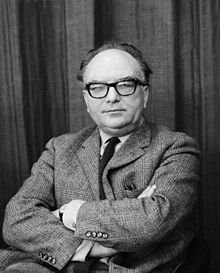Detail 01/1961 - J.B.Bakema [Diskussion]
Every building detail, like architecture as a whole, is ultimately an expression of human relationships. It in its own way the spirit that determined the building. In daily planning and execution, it is important to bring the basic idea to life to all the forces involved in the details. You have to get into a relationship between active giving and taking. Everything should serve to make people at home in their world.
A building is more than just a building; it is above all an architectural environment that is shaped to shape. Architecture is thus the spatial design of human relationships with universal (total) space based on practical purposes. By means of such design, man tries to become at home in infinite space.
Architectural detailing is the application of materials in the constructions according to them and, like architecture in general, subject to the last core task of all construction. The detail can intensify the spatial design up to the design idea; this again can be a detail Intensify it in such a way that it also becomes of creative value. If the detail is determined by the spatial design idea, then there can also be visual information about the idea underpinned by the whole thing every day. The details thus make the idea of design effective in life.
Architectural drawings are actually illustrations that provide instructive information about the intentions and possibilities of design to all parties involved: to clients, authorities, own employees, specialists, entrepreneurs, craftsmen, etc. An architectural office can only accomplish a really thorough instruction of this kind if the lead architect succeeds in bringing the task to be solved and the working idea to life with all contributors, on the sketchboard, on the calculator, on the typewriter, on the telephone and above all at the construction site itself. The contact between the designer (and his office) and the performers should be a relationship of active give and take. The architect gives his thoughts on how he intends to solve the general task of giving human relationships to the total space a place of dwelling; he receives information and suggestions about the material, the constructions and all means that can serve it. This conversation between the designer and those who put the construction into practice should therefore always be a two-Directional traffic, with rest areas and time for conversations. Today, unfortunately, they are often led too incidentally, as well as dead races in just one direction, without a stay.
When talking about every detail, one should ultimately always assume that the choice or fixation of detail is always part of the design process as a whole, which is responsible for serving the total human life in spatial design.
I believe that in today's civilization, human conditions also dry out because the effects of the three-dimensional form have become passive in daily life. A lot is being built, but today the construction processes are usually carried out with too large programs, at too fast a speed, too smooth and with too little understanding of the internal necessities in such a way that there are hardly any real tears.
Developing harmonious relationships between people and their surroundings is the core task of architecture, which must also determine everything in detail. It should be borne in mind today: between 1945 and 1960, profoundly changed conditions developed in the production and distribution processes, even more revolutionary than in the period between 1930 and 1945. We are obviously on the threshold of a next, development phase in the general human-space relations. The specialist for spatial design, the architect, should be aware of this historical moment. His task is to proportion the ever-increasing relationships of events to the scale of man in our time, by means of spatial structures. To this end, he should coordinate all work, from the definition of the construction task to detailing, in spatial design. If he does not do this, then he loses the position that Le Corbusier fixed with the words: "L'archi-tecte C'est le coddinateur pur sang." He then easily degrades itself to a mere decorator of materialistic schemes.
J. B. Bakema, Architect in Rotterdam
P.S.: translation from Deutsch to English through scan to text and auto-translation. The original is provided. I am not a german native, although I lived a few years and can understand some basic german, I leave this as it is. Will accept any help on the correction of the translation if provided. Thank you for your understanding.




